DmC: Devil May Cry
by Jin Lovelace, HSM team writer & filmmaker
When I first heard of Capcom’s venture to reboot the Devil May Cry series, I remained neutral. A lot of fans slammed the game immediately upon announcement and the design direction created by Ninja Theory; personally, my belief is that if Capcom handed over that responsibility to another party, it was a pretty solid vote of confidence.
Not many jumped on the bandwagon. Some would argue how the reboot would stray away from the original and were too afraid of the direction where Ninja Theory was heading, in spite of their response to the fans. I personally felt that the franchise, while great, needed a makeover.
I’ll be real with you: as much as I loved the core series, that change was needed. In an era where semi-sequels and “tween’quels” were the fanatical way of banking off big name games, Devil May Cry was definitely on the way of doing just that. After the second installment in the series, many left the game with a bitter taste in their mouths, and who wouldn’t blame them? The game fell short and flat on the story, gameplay and overall system direction. Though their intent was to produce a larger game and add more content, without the original director, Hideki Kamiya (and regardless of the commercial success it achieved), DMC2 resulted in being one of the most disappointing games of 2003.
The following titles went on to become great successors, but falling in-between the storyline of DMC 1 and 2; which, after DMC 4, there were two choices: continue on to make yet another prequel or fully move on and tell a story right after DMC2.
Whatever the confusing case may be, Capcom decided to wipe the slate clean and reboot the series in the form of the subject’s title: DmC.
Sometimes I think I’m one of the few that clearly comprehends the term “reboot” — and decided to finally take a chance on playing the game recently. While the session was meant to be a quick demo to try out a couple stages, it went on to me beating the game fully.
My thoughts on this game are simple: despite what others say, I tend to disagree with some of the opprobrium from the fans: it’s not the same “DMC” and the abandonment of character design, along with the game’s signature system direction, makes sense. I laud this fresh perspective from Ninja Theory.
DmC plunges you into a dark and gritty world with a hint of Gothic designs that captures the essence of what the title theme suggests. However, instead of a cocky, beefcake Dante that we all knew and grew to love, NT’s take on the character has more personality, funnier punchlines and vulgarity to flesh out the outdated nature of the OG Dante.
The game also disparages the overtly sexual design of the female cast. Instead, the protagonist, Kat, has a charming persona while the antagonist, Lilith, nearly made me sick to my stomach. The game doesn’t pull any punches on the grotesque designs of the Succubus or the boss fight with Lilith herself. In fact, one of the game’s grossest moments is with the former, which is something you have to see for yourself.
For the gameplay, this is where DmC really took the time to not stray away from the original formula. The system direction is something most should be familiar with, that is if you haven’t played this iteration just yet. The controls are spot on, as you can chain combos pretty soundly, only this time the schematics are a bit different. Though the weapons you pick up in the game were all useful (save for “The Kablooey”, which I found to be the most useless piece of nonsense in the game) you would have to hold the L2 or R2 to access them while using the corresponding attack buttons for their desired effect. It took me some time to get used to the direction, but after a few replays, you’ll want to learn almost every combination in the game, as the transitions are seamless and smooth.
What compelled me the most about DmC, though, is the plot. Not as campy as the original games, though it has its quirks. However, there’s something that has to be said about Mundus: he was pretty much a lackluster cipher. If you obviously remember the OG Mundus, he was a character that you could somehow feel the presence of, as you quickly see behind the character’s scheme and had a sense of passion to face against, with the final battle being somewhat memorable and one of the greatest of its time.
In DmC, you might as well call him a joke. If you were to pit this guy against Metal Gear Rising’s Senator Armstrong, he would’ve torn through him like tissue paper and followed it up with his indelible line, “Nanomachines, son!” In essence, I was happy to see a revamped character from the original rogue gallery, but you could compare that guy to the main antagonist from Devil May Cry 2, Arius.
Though I highly laud the game, some elements introduced into DmC presented a bit of flaw. While we can ignore how Mundus is as flat as week-old cola, the camerawork can be horrendous at times. I found myself fighting with the camera more in certain stages and missions where the angles were crucial to complete my goal. It’s not impossible, but just rather annoying. And for those that are seeking out some brain-twisting puzzles in this game, you will either rejoice or be left disappointed with literally one puzzle segment throughout the game, and it’s introduced towards the end of the game. This installment is strictly about the action (where the way you have to approach certain enemies in combat, and how you deal with them which, in turn, opens a whole new perspective in terms of strategy) and platforming, and there’s–again–literally a lot of them.
Not that I have an issue with that per se, but there are often times where you don’t know where to go because some of the hook markers aren’t that visible, so you’re guaranteed a round trip to a pitfall. Doing that a few more times and you’re treated to first-class seating at the Game Over screen.
But, overall, there is still fun to be had with DmC — and then some. The game presents itself quite well, and Ninja Theory did a fine job on creating this title, despite the negative feedback at the time. If you haven’t made the time to play this gem, do yourself a favor: pick up a copy and give it a try.
Share
| Tweet |


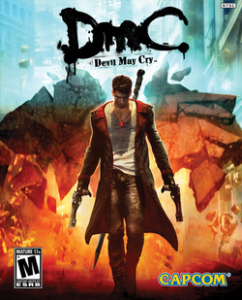
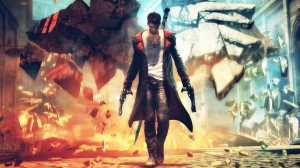
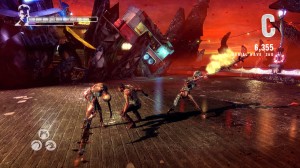
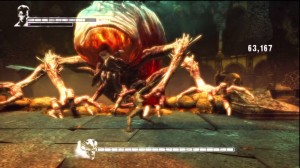
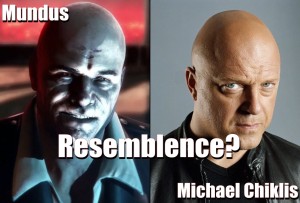
 Twitter
Twitter